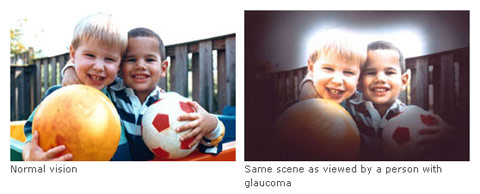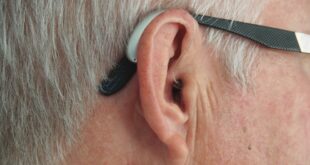The Eye
The Eye captures visual information and sends it in the form of nerve impulses to the brain. The brain processes this information into the "pictures" we see.
The eye is made from soft, but strong tissues. The eye needs to maintain its shape so that it can focus light accurately. This is achieved by keeping the eye firm, like a balloon.
The fluid in the front part of the eye known as aqueous is pumped into the front part of the eye. This fluid exerts just enough pressure to keep the eye properly formed without damaging it. This means that the amount of new fluid that is constantly being pumped into the eye is balanced by the amount that is constantly draining out of the eye. Circulating around the structures inside the eye, the fluid is then drained through a system of microscopic pipes and a meshwork out of the eye.
This drainage system is located at a place in the eye called the "angle" which is located where the iris meets the cornea. Normally, the amount of fluid produced is balanced by the amount draining away, so the pressure in the eye stays constant.
What is Glaucoma?
Glaucoma is the name given to a group of eye diseases where the optic nerve at the back of the eye is slowly destroyed.
The nerve fibres progressively die taking away the peripheral (side) vision first. Visual loss is very slow and often undetected until quite advanced. This eye sight loss cannot be regained. In most people this damage is due to increased pressure inside the eye – a result of blockage of the circulation of aqueous, or its drainage. In others, the damage may be caused by poor blood supply to the vital optic nerve fibres, a weakness in the structure of the nerve, and/or a problem in the health of the nerve fibres themselves. 
Approximately 68,000 New Zealanders over the age of 40 currently have glaucoma…
- Glaucoma is the number one cause of preventable blindness in New Zealand and other developed countries.
- Half of those with glaucoma don't know they have it.
- If glaucoma is detected early enough, treatment can prevent progression and preserve eyesight.
- The damage to the optic nerve from glaucoma is irreversible.
- Glaucoma currently affects approximately 65 million people worldwide.
Who is most at risk?
Although anyone can get glaucoma, people in the following categories have a higher risk:
- 60 years and over
- A family history of glaucoma
- Short sightedness (myopia)
- High blood pressure
- Past or present use of steroid drugs
- Previous eye injury
- African descent
What are the symptoms of Glaucoma?
- Glaucoma has no symptoms until eye sight is lost at a late stage of the disease.
- Glaucoma is known as the "sneak thief of sight".
- Glaucoma is a silent disease.
Damage usually progresses very slowly and destroys vision gradually, starting with the peripheral (side) vision. The person remains unaware of any problem until a majority of nerve fibres have been damaged, and a large part of vision has been destroyed.
This damage is irreversible. Treatment cannot recover what has been lost. However with early diagnosis, appropriate treatment and monitoring, eye sight can be preserved and the progression of damage stopped or slowed down.










marg75754 - 13 years ago
I should have tried this site first good info was given after wasted hours on the net & now I know try here first.
Thank you.